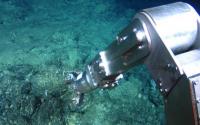Revision of Deep seabed mining is not currently technologically viable from Sat, 09/13/2014 - 17:11
Deep seabed mining has not taken off because the technology to exploit the seabeds is not at a state where it would be economically viable to do so.
Quicktabs: Arguments
Kato says that he doesn't know whether the resource is commercially viable. "I'm a geoscientist, not an economist," he notes.
But Gareth Hatch, an industry analyst and founder of the Technology Metals Research consultancy in Carpentersville, Illinois, is sceptical. "People talk about mining on the asteroids or the Moon. This isn't that hard, but it's similar," says Hatch. Current on-land mines, and sites picked out for future mines, have rare-earth concentrations of about 3–10%, he points out. The much lower concentrations at the Chinese clay mine mentioned by Kato and his colleagues are only economically viable because the material is much easier to access than it would be in hard rock. That's not true for mud located below 4 or 5 kilometres of water, which would require expensive ship time and equipment to pull up. "There are better options," he says.
Craig Smith, an oceanographer at the University of Hawaii at Manoa, notes that companies are exploring the idea of mining manganese nodules from the sea floor to exploit their commercially-valuable contents, including copper and nickel as well as rare earths. Commercial mining of nodules is "probably a decade away", says Smith. Ocean mud could prove another possible source of the increasingly valuable elements.

Although several countries, including Saudi Arabia and Sudan, have recently shown renewed interest in tapping mineral resources on the deep seabed, the costs of operating in the difficult environment deep waters pose will likely preserve subsea basins for a little while longer.
[ More ]